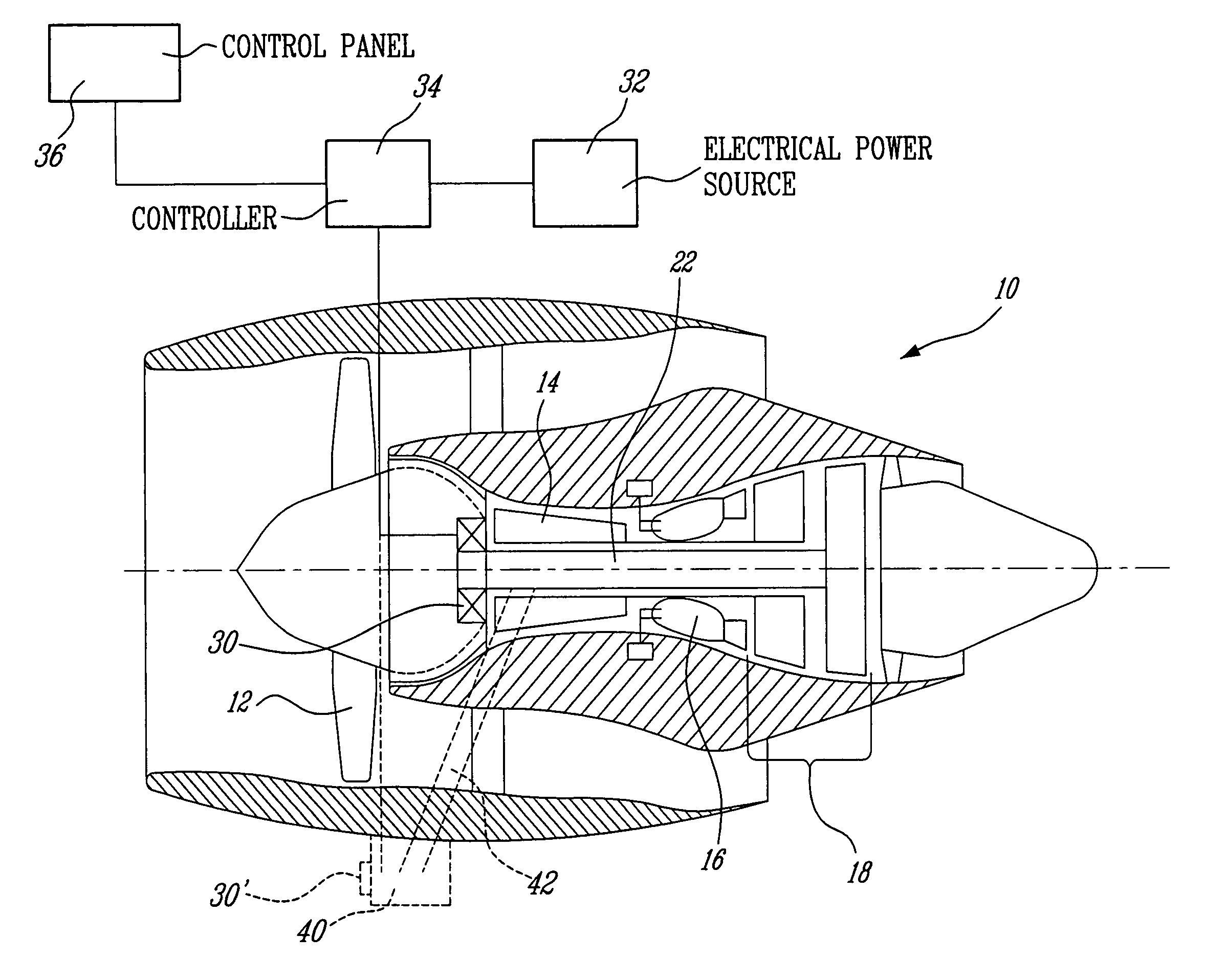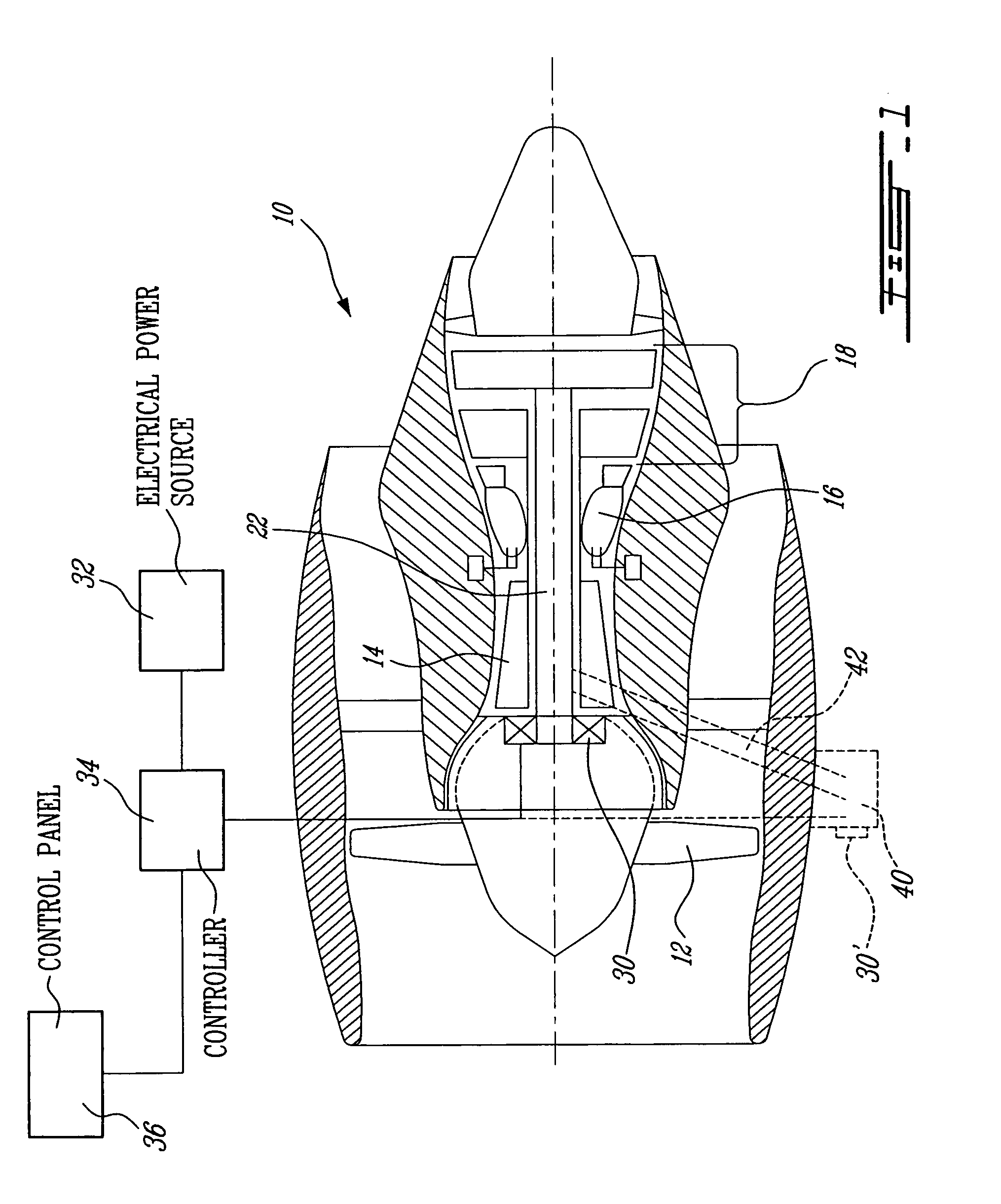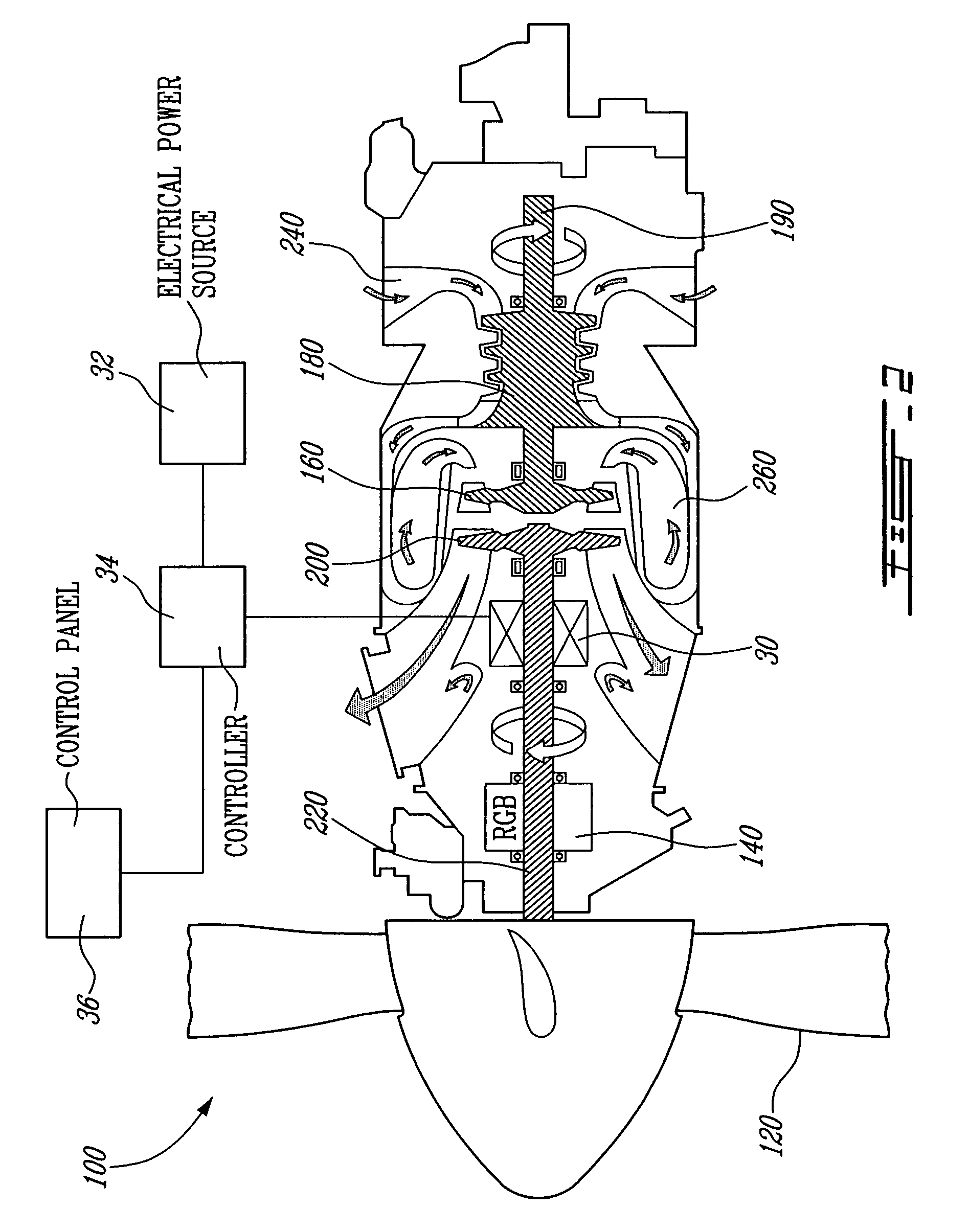Method and system for taxiing an aircraft
a technology for taxiing aircraft and aircraft, applied in the direction of aircraft power plants, machines/engines, gas turbine plants, etc., can solve the problems of increasing the interval between an arrival and a departure, increasing the operating cost of taxiing an aircraft, and increasing the delay
- Summary
- Abstract
- Description
- Claims
- Application Information
AI Technical Summary
Benefits of technology
Problems solved by technology
Method used
Image
Examples
Embodiment Construction
[0012]FIG. 1 illustrates an example of a turbofan 10. This engine 10 comprises in serial flow communication a propulsor, in this case a fan 12, through which ambient air is propelled, a multistage compressor 14 for pressurizing the air, a combustor 16 in which the compressed air is mixed with fuel and ignited for generating an annular stream of hot combustion gases, and a turbine section 18 for extracting energy from the combustion gases. The fan 12, when rotated, generates thrust using the power received through at least one turbine of the turbine section 18.
[0013]FIG. 1 also shows that the engine 10 is provided with an electrical motor 30 coaxially mounted and in a torque-driving engagement on the shaft 22 of the low pressure spool to which the fan 12 is connected. The electrical motor 30 is designed to be sufficiently powerful to drive the fan 12 in order to taxi the aircraft without using fuel in the engine 10 or using a significantly reduced amount of fuel. Electricity is sent ...
PUM
 Login to View More
Login to View More Abstract
Description
Claims
Application Information
 Login to View More
Login to View More - R&D
- Intellectual Property
- Life Sciences
- Materials
- Tech Scout
- Unparalleled Data Quality
- Higher Quality Content
- 60% Fewer Hallucinations
Browse by: Latest US Patents, China's latest patents, Technical Efficacy Thesaurus, Application Domain, Technology Topic, Popular Technical Reports.
© 2025 PatSnap. All rights reserved.Legal|Privacy policy|Modern Slavery Act Transparency Statement|Sitemap|About US| Contact US: help@patsnap.com



